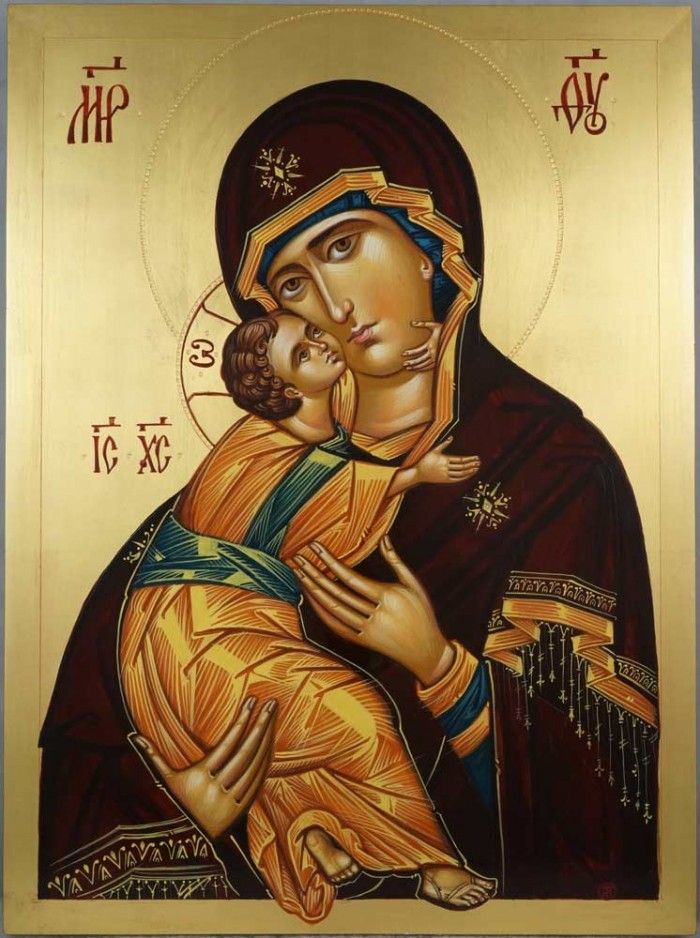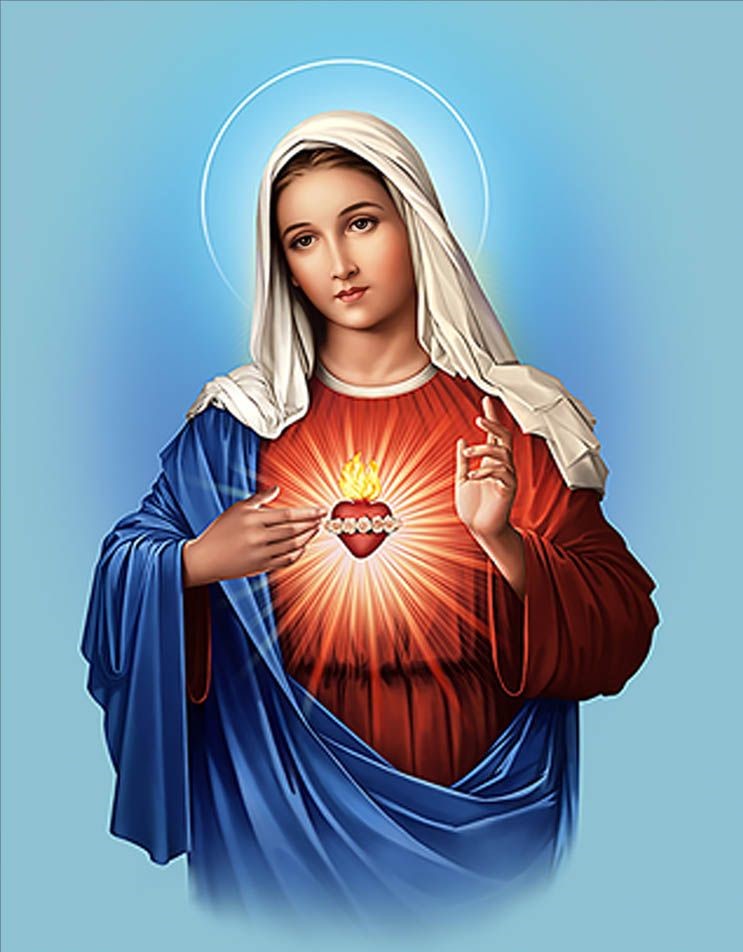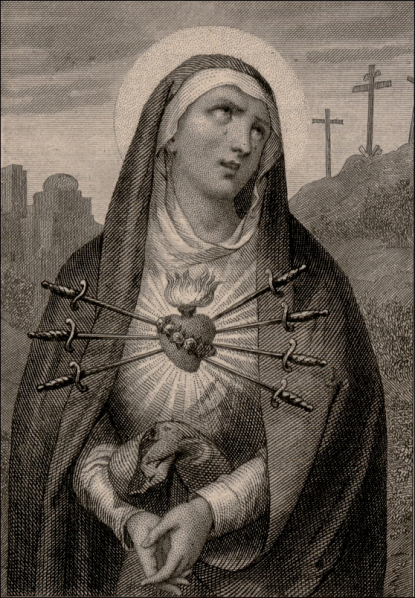The Virgin Mary: Flower of May
- Dominus Est!
- May 1, 2020
- 11 min read
Updated: Mar 2, 2021
by Clyde Ericson H. Nolasco
One sunny afternoon in a rural municipality not far from Manila, I chanced upon seeing young children hurrying to the church while carrying flowers. Neither roses nor sampaguita but gumamela and some bougainvillea obviously picked from their backyard gardens. Nothing fancy but it was nostalgic. It brought me back to my summer days spent in the church when I was younger. I realized it was May, it was Flores de Mayo.

The Blessed Virgin Mary, the Flower of May More so, the Philippines is also known as pueblo amante de Maria or “a people in love with Mary.” The Catholic Bishops’ Conference of the Philippines’ pastoral letter on the Blessed Virgin Mary in 1975, Ang Mahal na Birhen, affirms the very special place of the Blessed Mother in the life of the Filipino people expressed in different colorful local devotions.
Mary is both a loved and misunderstood figure in the Catholic faith. While most would easily see her as a refuge in times of troubles, some would still question her place in the entire salvation history. The following is a list composed of names, titles, devotions and apparitions associated with Mary. Let them be our flowers that we offer each day this month and may these “flowers” help us get to know more about our Mother and be able to grasp her place in the salvific plan of God.
1. Theotokos or Mary, Holy Mother of God - This is Mary’s first and the most important among her dogmatic titles. Theotokos derives from the Greek terms Theos (God) and tiktein (to give birth). Thus, Mary is the Theotokos, the one who gave birth to God or simply the "God bearer." The title, defined by the Council of Ephesus in 431 A.D., refers to the Virgin Mary as the Mother of the incarnate Son of God. Her feast to celebrate her Motherhood is January 1. 2. The Immaculate Conception or Mary, Conceived Without Original Sin - This 1854 dogma was issued by Pope Pius IX. Mary is referred to as the Immaculate Conception or believed that as she was conceived by her parents, she was given the grace of being saved by Christ before she was born. She was redeemed and remained sinless from the moment of her conception throughout her life. December 8 is the feast day of the Immaculate Conception and day of obligation. Most churches, minor basilicas and dioceses in the Philippines are dedicated to this title of Mary. 3. Mary, ever Virgin - The perpetual virginity of Mary is expressed in three parts found in the Catechism of the Catholic Church no. 510: in her virginal conception of Christ; in giving birth to Christ; and in her continuing virginity after His birth. In order to carry the Son of God, Mary needed to be a virgin for many reasons. 4. Queen Assumed into Heaven or Our Lady of the Assumption - Every August 15, we celebrate the feast of the Assumption of Mary or that Mary's body did not experience corruption but was assumed into heaven as defined by a dogma issued by Pope Pius XII in 1950. Mary, after completing the course of her earthly life, was taken up body and soul into the glory of heaven. 5. Our Lady of Antipolo (Philippines) - This title is also known as the Our Lady of Peace and Good Voyage. Her history dates back to the 16th century during Spanish colonization in the Philippines. Spanish traders from Mexico crossing the perilous Pacific Ocean would seek protection from the Black Madonna they have aboard. Eventually, the Black Madonna became the patroness of those “galleon trades” and was named “Our Lady of Peace and Good Voyage” or Nuestra Señora de la Paz y Buen Viaje. Decades later, the image was left in the Philippines. It would disappear then would be found atop a tipolo tree. The town was named Antipolo and so was this Marian Image. 6. Our Lady of Mother of Perpetual Help - This title is given to the Blessed Virgin Mary associated with the Byzantine icon of the same name whose history traces back to the 13th to 15th century. The miraculous image is very popular among Catholics around the world. It is now enshrined in the Redemptorist Church of St. Alphonsus in Rome. Locally, the most venerated version of this image is in Baclaran, which is why Wednesdays are called Balcaran Day. 7. Our Lady of Guadalupe (Mexico) - Our Lady of Guadalupe or the Virgin of Guadalupe, is based on Mary’s appearance before St. Juan Diego in a vision in 1531.Our Lady of Guadalupe’s role in Mexican history is not limited to religious matters; she has played an important role in Mexican nationalism and identity. Her feast is on December 12 and she is the patroness of Mexico, the Americas, and the unborn. 8. Our Lady of Czestochowa or The Black Madonna (Poland)- This is Poland's national shrine to Mary. Her history is rooted in a legend that St. Luke painted this icon on a table that Jesus built. It was discovered in the Holy Land by St Helen, the mother of Emperor Constantine and a collector of Christian relics, then eventually brought to Poland. Popes, pilgrims and the Polish have all recognized the miraculous nature of the image. 9. Our Lady of the Miraculous Medal (France) - The Medal of the Immaculate Conception, or commonly known as the Miraculous Medal, was shown to St. Catherine Labouré, a spiritual daughter of St. Louise de Marillac and St. Vincent de Paul. This took place in the chapel of the Motherhouse of the Daughters of Charity, Paris, France. The Medal was made according to Our Lady's design. It was freely circulated and in a short time was worn by millions and many miracles were associated with it. 10. Our Lady of Lourdes (France)- Revered every February 11, this is one of the most famous apparitions of Mary that took place in southern France. On February 11, 1858 a young, poor girl named Bernadette Soubirous, who would later become a saint, was out collecting firewood with her sister and another friend near a grotto when she saw a vision of a lovely lady. A church was built as a shrine in the location of the apparition and became a pilgrim site especially for the sick.
11. Our Lady of Knock (Ireland) - On August 21, 1879, it was around 8:00 o’clock in the evening when the Virgin Mary, along with St. Joseph and St. John the Evangelist with a Lamb and cross on an altar at the gable wall of the Parish Church, appeared to fifteen people in a small village of Knock, Ireland. It is a major apparition approved by the Church.
12. Our Lady of the Abandoned or Nuestra Señora de los Desamparados - May 12 is the feast day of this title originating from Valencia, Spain. In the 15th century, a confraternity was founded in Valencia to take care of abandoned children, under the invocation of Our Lady of the Abandoned Ones. Three young men volunteered to carve a statue of the image of the Blessed Virgin for the confraternity on the condition that they be left on their own in a room. After three days, the young men disappeared and the image of the Virgin Mary was found inside their room.
13. Our Lady of Fatima (Portugal) - In 1916, three young shepherds (Lucia Dos Santos, and her cousins, Francisco and Jacinta Marto) saw a vision of Mary and were asked to pray the Rosary for the world. There were six apparitions that happened until the following year. The last known as the “Miracle of the Sun” that occurred on October 13, 1917, witnessed by 70,000 people at the Cova da Iria, the site of the Virgin Mary apparitions.
14. Immaculate Heart of Mary - This title of Mary is invoked along with the devotion to the Sacred Heart of jesus. It became more prominent during the time of St. John Eudes. St. John brought people to love Christ and the Virgin Mary by speaking tirelessly about their Heart, the sign of the love God shows for us and the communion to which we are called. This devotion is meant to inspire us and be like Mary in loving Jesus.
15. Mater Dolorosa - Mater Dolorosa or the Sorrowful Mother depicts Mary as she stood at the foot of Jesus' cross. Her feast day is September 15, a day after the Solemnity of the Triumph of the Cross. In Catholic iconography, she is veiled in black and has seven swords pierced through her heart representing seven sorrowful events in her life as the mother of Jesus.
16. Virgin of the Poor (Belgium) - On January 15, 1933, the Virgin appeared to an 11-year old girl Mariette Beco. In the apparitions, it was said that Mary was wearing a white gown and an “unforgettable blue” sash and a transparent veil covering her head and shoulders. Mary’s right foot was visible and had been crowned with a rose between her toes. She has a Rosary on her right arm made of a golden chain and cross with diamond-like beads. Mary called herself the Virgin of the Poor and promised to intercede for the poor, sick, and suffering.
17. Our Lady of Mt. Carmel - With July 16 as her feast day, this title of Mary is associated with brown scapulars. The scapular comes to us through the vision of St. Simon Stock. Our Lady gave St. Simon a scapular for the Carmelites with the following promise, saying : "Receive, My beloved son, this habit of thy order: this shall be to thee and to all Carmelites a privilege, that whosoever dies clothed in this shall never suffer eternal fire .... It shall be a sign of salvation, a protection in danger, and a pledge of peace." Many miracles have been attributed to the scapular of Our Lady of Mt. Carmel.
18. Nuestra Señora De Guia (Manila) - Nuestra Senora De Guia is Our Lady of Guides. This is the oldest Marian image in the Philippines. It was believed that the image must have been brought to Cebu in the Philippines in 1521 and eventually gifted to one of the rajahs in Manila. On May 19, 1571, when Miguel López de Legazpi occupied Manila in the name of the kingdom of Spain, one of his soldiers saw native pagans worshipping a beautiful image of the Blessed Virgin Mary surrounded by pandan leaves. The image is now enshrined in the Archdiocesan Shrine of Our Lady of Guidance, otherwise known as the Ermita Parish.
19. Our Lady of Peñafrancia (Naga) - This devotion roots from the story of Simon Vela. Though born rich, he eventually gave up all his riches for the church and charity works. He spent much of his time in church. One day, he fell asleep and was awoken by a voice, asking him to travel to Peña de Francia (Rock of France) where he would find the image of the Blessed Mother. On May 19th, 1434, after five disappointing years and with the help of some men, they uncovered an image of the Blessed Virgin Mary with the Child Jesus. This beloved Naga devotion began in 1712 and draws millions of devotees every year.
20. Our Lady of the La Salette (France) - On September 19, 1846, a woman appeared within the light; she was sitting, her head in her hands, her elbows on her knees, in deepest grief to two children in La Salette. This apparition at La Salette is a modern-day reminder that Mary constantly intercedes for us before God and that she is the Reconciler of Sinners, calling us back to the message and way of the Son, Jesus.
21. Queenship of Mary - In 1954, Pope Pius XII established August 22 as the feast of this title of Mary and points out that Mary deserves the title as she is the Mother of God, the New Eve and intercessor. But Mary’s queenship has roots in Scripture: at the Annunciation and the Visitation. As in all the mysteries of Mary’s life, she is closely associated with Jesus: Her queenship is a share in Jesus’ kingship. Saint Ephrem called Mary “Lady” and “Queen” in the fourth century. In the 11th to 12th century, hymns honored Mary as queen: “Hail, Holy Queen”, “Hail, Queen of Heaven”, “Queen of Heaven”.
22. Our Lady of Zeitoun (Egypt) - For a span of three years (1968-1971), Mary reportedly appeared in Zeitoun, Egypt floating above Saint Mark's Coptic Church, a church dedicated to the Holy family. Our Lady appeared on many occasions especially at night, sometimes accompanied by white doves that would fly around her. The many apparitions attracted large crowds, estimated at as much as up to 250,000 people. Christians, Jews, Moslems, and even unbelievers gathered to view the sight. The apparitions were photographed, filmed and broadcast on Egyptian TV. An estimated 40 million people witnessed the events.
23. Our Lady of the Holy Rosary - October is the Month of the Holy Rosary, when we celebrate the feast of the Our Lady of the Holy Rosary on October 7. Known for several centuries by the alternate title of “Our Lady of Victory”, the feast day is in honor of a 16th century naval victory when Europe won against Turkish invasion. Pope St. Pius V attributed the victory to the intercession of the Blessed Virgin Mary, when the Pope asked the whole of Europe to pray the Rosary on the day of the battle.
24. Our Lady, Help of Christians (Czech Republic) - Magdalene Kade, a bedridden and sickly 31 years old orphan woman, received a vision of the Virgin Mary who immediately cured her. The miraculous event was examined and then recognized for its healing and supernatural character. In the period between 1870 and 1885, a neo-Romanesque church was built and was elevated to minor basilica by Pope Leo XIII, who officially consecrated it and dedicated it to Mary, "Help of Christians." This shrine is still an important place of pilgrimage.
25. Mother of Good Counsel - Devotion to this title is associated with a miraculous sacred image found in a church in Genazzano, south-east of Rome. In 1467, the residents of Genazzano heard “exquisite music” coming from heaven. They saw a white, shining cloud descending on the church of the Mother of Good Counsel. The cloud slowly vanished, revealing a beautiful painting of Our Lady tenderly holding her Divine Son in her arms. Then the sick were healed and other miracles happened. The image depicts Mary half turned toward her son and half toward the viewer, thus reflecting Mary’s concern for both Jesus and his Church.
26. Our Lady of Manaoag (Pangasinan) - In 1610, a middle-aged farmer was walking home along a road in the province of Pangasinan in the Philippines when he heard a mysterious voice of a Lady. He turned around and with great awe, he saw the radiant Lady with a Rosary on her right hand and a Child on her left. The vision seemed to be standing on a cloud atop a small bush. He fell to his knees. He mentioned the apparition to the people and soon, right on the spot where he saw Our Lady, a chapel was built. A town then flourished around it and was called "Manaoag", which means “to call.”
27. Our Lady of Peace - The “Our Lady of Peace” and “Queen of Peace” are among the most popular titles of the Blessed Virgin Mary. The Blessed Mother is depicted in art holding both a dove and an olive branch as symbols of peace. This Marian image is usually associated with miraculous triumphs like the Our Lady of Peace of the EDSA People Power Revolution.
28. Our Lady of Medjugorje (Bosnia-Herzegovina) - Medjugorje is a small village in the former Yugoslavia, now present-day Bosnia-Herzegovina, where Mary appeared to six people and had a series of dialogues. The apparition started in 1981 and after 39 years, there are still reports of Mary appearing up to this year. Our Lady of Medjugorje is also known as the Queen of Peace and Mother of the Redeemer. The Church has yet to proclaim the validity of the apparition.
29. Our Lady of Snow (Rome) - On August 5, 352, snow fell in Rome, which is a very unlikely phenomenon. A wealthy man named John and his childless wife thought of making the Virgin Mary to be their heiress. At Pope Liberius’ suggestion, they asked for a “sign” from heaven. Mary, in the evening of August 5, appeared to John, his wife and to the Holy Father, Pope Liberius, instructing them to build a church in her honor on the crown of the Esquiline Hill now known as the Basilica of St. Mary Major.
30. Undoer of Knots - The image of Mary Undoer of Knots goes back to St. Irenaeus who said, “The knot of Eve’s disobedience was untied by the obedience of Mary; what the virgin Eve bound by her unbelief, the Virgin Mary loosened by her faith.” Unlike other Marian devotions, this title of Mary came about through her intercession.
31. The Visitation of Mary - The Visitation of the Blessed Virgin Mary is based on the Gospel of Luke 1:39-56 when Mary visited her cousin Elizabeth. This happened after the Annunciation; Mary was pregnant with Jesus while Elizabeth was pregnant with John (the Baptist). It is believed that this visit was to bring graces on Elizabeth and on John, who leapt for joy in his mother’s womb because of the presence of Jesus.
**Cover artwork was made by Sabrina Cobangbang of St. Scholastica's College Manila



































































Comments